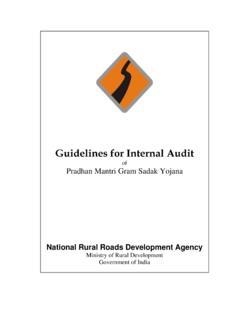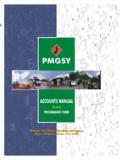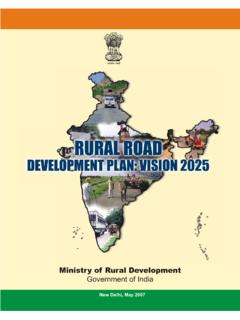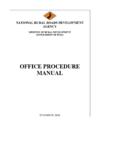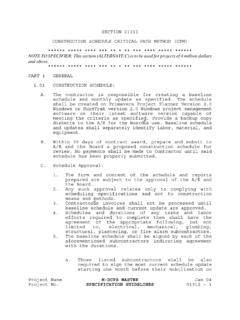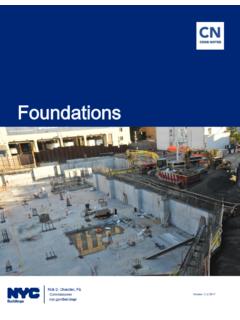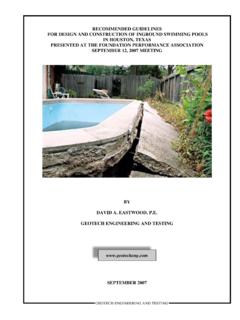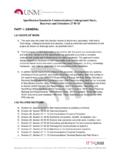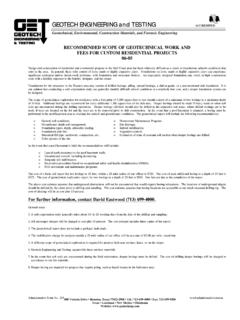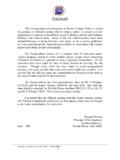Transcription of Pradhan Mantri Gram Sadak Yojana
1 Pradhan Mantri gram Sadak Yojana Draft guidelines for Quality Monitoring by National Quality Monitors under Third Tier of Quality Mechanism National Rural Roads Development Agency Ministry of Rural Development, Government of India January, 2007 1 2 Index of Contents Topics Page Introduction 32. Arrangements of Inspection 53. Prioritization of Works for Inspection 74. Information and Details to be furnished to NQM by PIU 85. Inspection, Observation and Grading of Works 106. Reporting, Entry in Website and Performance Evaluation of NQMs 18 List of Annexure 1.
2 Annexure 1 Requirement of Man power, Equipments and Implements. 2. Annexure 2 Procedure to use PMGSY website. 3. Annexure 3 Item-wise observations, their method, frequency and awardable quality grading 4. Format 1 Part I Work Information 5. Format 1 Part II Observations of NQM for Ongoing/Completed Work 31. Introduction The State Governments are responsible for implementation of Pradhan Mantri gram Sadak Yojana (PMGSY) in the State, as such; it is the responsibility of the State Government to ensure quality of road works under this programme. However, since the programme lays special emphasis on the quality and timely completion of road works, a three tier quality management mechanism has been operationalised.
3 The standards for quality of works have been prescribed under the publication Ministry of Rural Development, Specifications for Rural Roads published by IRC in August, 2004 (hereinafter referred to as Specifications). The comprehensive details about rural roads are provided in Rural Roads Manual IRC SP: 20, 2002. In order to provide detailed guidance to the field engineers about the tests and testing procedures, the NRRDA has published Quality Control Hand Book (being revised by IRC) and for recording the test results, Quality Control Registers have been prescribed.
4 The first tier of quality management mechanism is envisaged as in-house quality control system to ensure the implementation of quality standards by way of carrying out mandatory tests, however, the second tier is envisaged as independent quality check and monitoring mechanism to be operationalised by the States. Whereas, the State Governments are responsible for quality management through operationalization of the first two tiers, the National Rural Roads Development Agency (NRRDA) arranges for quality monitoring through independent monitors termed as National Quality Monitors (NQMs). The objective of this third tier of quality mechanism is to monitor the quality of road works executed by the States with a view to ensure that the road works under the programme confirm to standards and to see whether the quality management mechanism in the State is effective.
5 The role of this tier is to provide guidance to State implementation machinery and the field engineers rather than fault finding , as such; the shortcomings are identified by the NQMs and a feedback is provided to the States for improvement. The National Quality Monitors are performing inspection of works since March, 2002. The guidelines for inspection and reporting formats were prescribed during the initial period of operationalization of this tier of QM; however, based on the feedback from various stakeholders, the guidelines and reporting formats were revised in July, 2004.
6 Having gathered the experience of independent Quality Monitoring of rural roads in last four years and based on the valuable suggestions and feedback has been provided not only by the State officials and NQMs but also by the field officers and auditing agencies, it is felt that certain revisions in respect of the following items are necessary. 1. The attention of the third tier of QM should focus on the quality of work, guidance related to quality rather than other aspects. 2. The observations of the NQMs should be objectively based on defined methods. 3. The NQM should be more accountable for the observations he has made.
7 Therefore, as an endeavor to continuously update to achieve the targets of best of the quality, the guidelines and reporting format for inspection of works under third tier are being revised and the process of continuous performance evaluation of National 4 Quality Monitors by way of periodic review of reports and field verification by reputed institutions is envisaged. Under the revised guidelines , the PIU and the NQM would also be required to use OMMAS website extensively. The NQM would be required to download the list of works in the district to be visited by him/her and make mandatory online entry of sub-item grading in the website which would generate the item grading as well as the overall grading and also enable the States, PIUs and the NRRDA to carry out the further analysis of NQM reports.
8 To enable the NQM to make online entry, he/she would be given the log-in and the password for limited data entry. The PIU would be able to generate Part-I Work Information from the OMMAS using the PIU Log-in. 52. Arrangements of Inspection The NQMs shall be given the programme to inspect the works in designated State and designated districts during the designated months. The States shall continue to making necessary arrangements for visit of NQMs. The detailed guidelines for arrangement of inspection of NQMs are given below: 1. The National Quality Monitors will be sent the letter of request with programme of inspection of works.
9 The copy of the letter will also be endorsed to the States for making necessary arrangements and for information to concerned PIU. 2. On receipt of the letter the SQC shall contact the NQM and get the tentative programme of inspection. In case, the SQC does not contact the NQM, the NQM may take initiative. As soon as the programme of inspection is finalized, the NQM shall invariably inform NRRDA about the programme of his visit in the prescribed Fax/ Mail Back Form only and in no other way. It has been observed that sometimes, some NQMs keep on trying to contact the SQC without any results, in such cases; the NQMs shall fax the programme to SQC.
10 It shall be the duty and responsibility of the SQC to contact the NQM and concerned PIU and finalize the dates and programme of NQM as per mutual convenience of NQM and PIU. 3. It shall be responsibility of the SQC to ensure adequate arrangements for inspection of NQM. In these revised guidelines , it is mandatory for the NQM to make observations on the basis of quality control tests/ hand-feel tests/ measurements performed under his personal supervision for which necessary equipments, staff and implements would be required; therefore, it shall be the personal responsibility of the SQC to ensure that requisite staff and equipments are provided to NQM for performing/ getting performed required tests (List of equipments and staff required for inspection is enclosed as Annexure 1).

